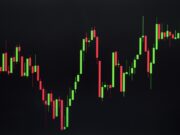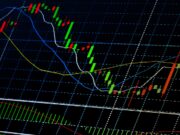In the dimly lit corridors of Wall Street, where fortunes are made and lost in the blink of an eye, legends are born. One such legend is that of the Phantom Trader. It was the tumultuous year of 1987, just days before the infamous Black Monday. Whispers began circulating about a mysterious trader who seemed to predict market movements with uncanny accuracy. No one knew his real name, and no one had ever seen him. All that was known was his unique trading signature, which appeared on the most unexpected trades, always ahead of major market shifts.
Some said he was a time traveler, others believed he had developed an algorithm of unparalleled precision, and yet others thought he was just a myth. But when Black Monday hit, and the market crashed by over 20% in a single day, the Phantom Trader’s legend was solidified. Days before the crash, he had placed massive short positions, making a fortune while others faced ruin.
The Art of Hedging
The tale of the Phantom Trader serves as a stark reminder of the unpredictability of markets and the importance of hedging. Hedging is the practice of making an investment to reduce the risk of adverse price movements in an asset. It’s like taking out an insurance policy; you might not need it, but if disaster strikes, you’ll be glad you have it.
Why Hedge?
Markets are inherently volatile. Economic data, geopolitical tensions, natural disasters, and now, even tweets can send stocks tumbling. Hedging allows investors to protect their portfolios against unforeseen downturns. It’s not about making money but about preserving it.
Three Stocks to Hedge Against Economic Crashes
- Goldman Sachs ActiveBeta U.S. Large Cap Equity ETF (GSLC): This ETF offers exposure to large-cap U.S. stocks but uses a multi-factor approach to select stocks based on value, momentum, quality, and low volatility. It’s a diversified way to tap into the stability of established companies that are likely to weather economic downturns.
- iShares 20+ Year Treasury Bond ETF (TLT): When stock markets crash, investors often flock to the safety of U.S. Treasury bonds, driving their prices up. TLT provides exposure to long-term U.S. Treasury bonds, making it a classic hedge against stock market volatility.
- ProShares Short S&P500 (SH): This ETF aims to provide investment results that correspond to the inverse of the daily performance of the S&P 500. If the S&P 500 goes down, SH is designed to go up, making it a direct hedge against market downturns.
Epilogue: Embracing the Unknown
While the legend of the Phantom Trader remains shrouded in mystery, the lessons it offers are clear. Markets are unpredictable, and while we can’t foresee every twist and turn, we can prepare for them. Hedging is not about predicting the future but about being ready for it, whatever it may hold.
In the world of investing, as in life, it’s not the unknown that should be feared, but being unprepared for it. The Phantom Trader of Wall Street may be a legend, but the importance of hedging is very much a reality.
Where to invest $500 Right Now?
Before you consider buying any of the stocks in our reports, you’ll want to see this.
Investing legend, Marc Chaikin just revealed his #1 stock for 2024…
And it’s not in any of our reports.
During his career of nearly 50 years, Marc Chaikin was one of the quantitative minds behind some of the most famous investors in history: Paul Tudor Jones, George Soros, Steve Cohen, and Michael Steinhardt.
Even the Nasdaq hired him to create three new indices.
And now he’s going live with his #1 pick for 2024.
You can learn all about it on Mr. Chaikin’s Website, here.
Wondering what stock he’s investing in?
Click here to watch his presentation, and learn for yourself…
But you have to act now, because a catalyst coming in a few weeks is set to take this company mainstream… And by then, it could be too late.
Click here to reveal the name and ticker of Marc Chaikin’s no. 1 pick for 2024…











